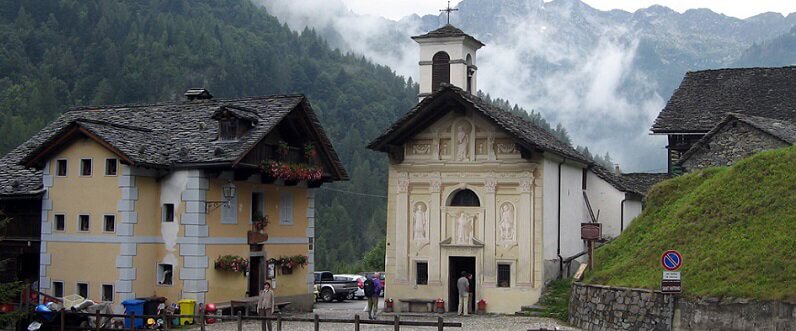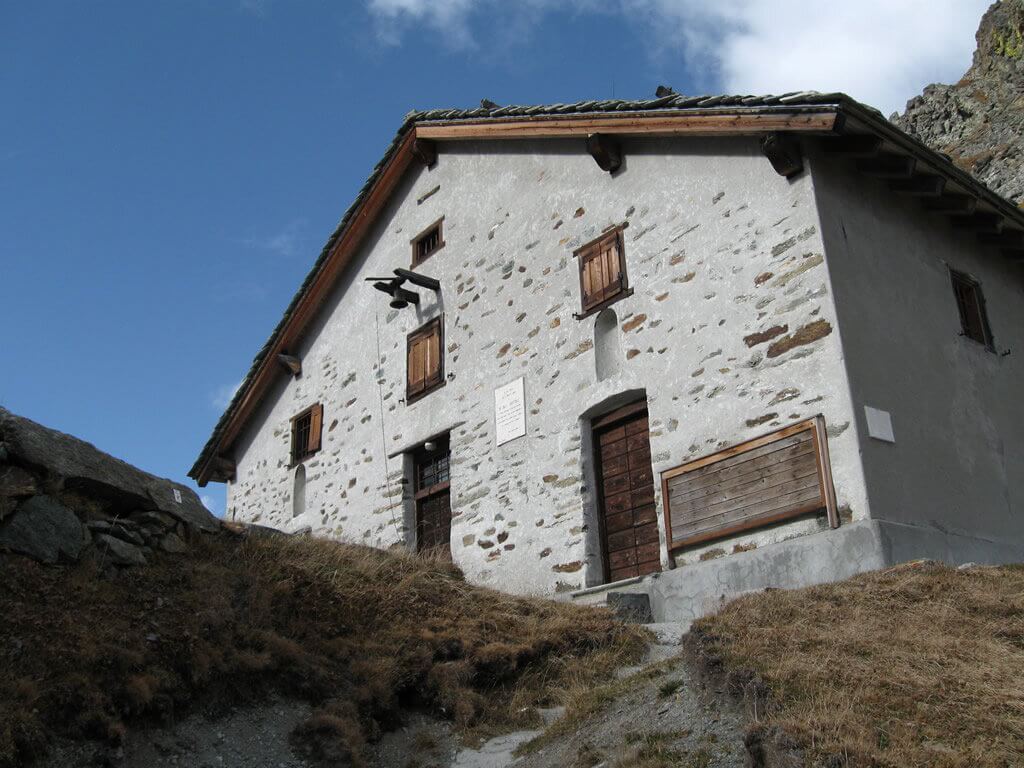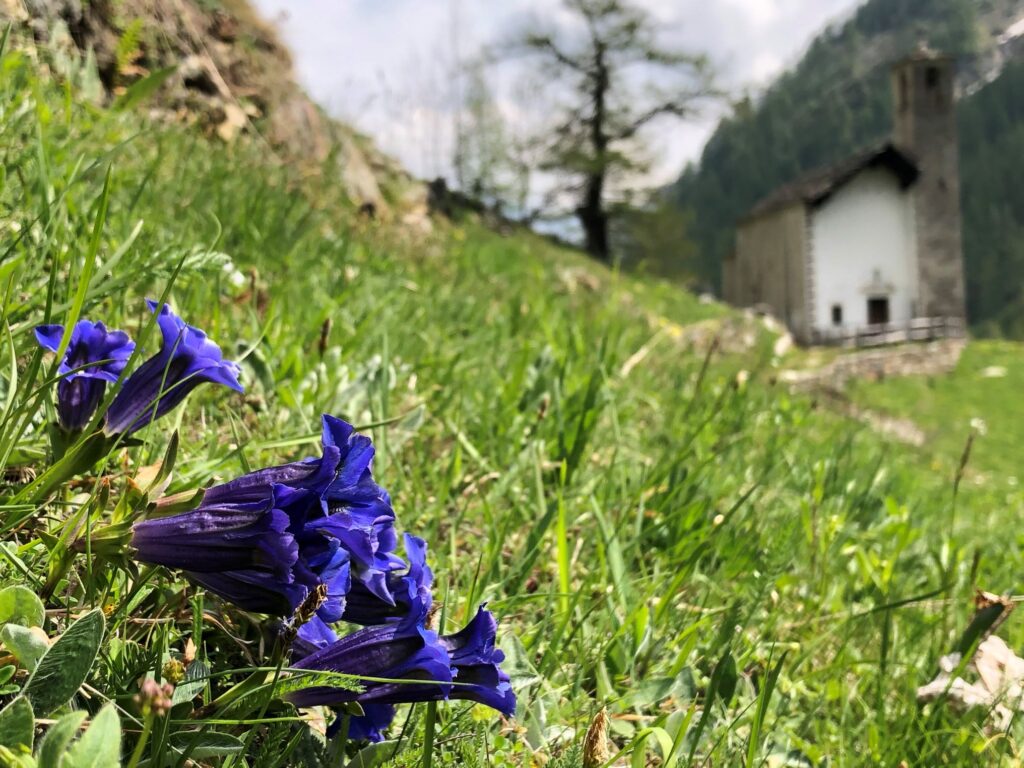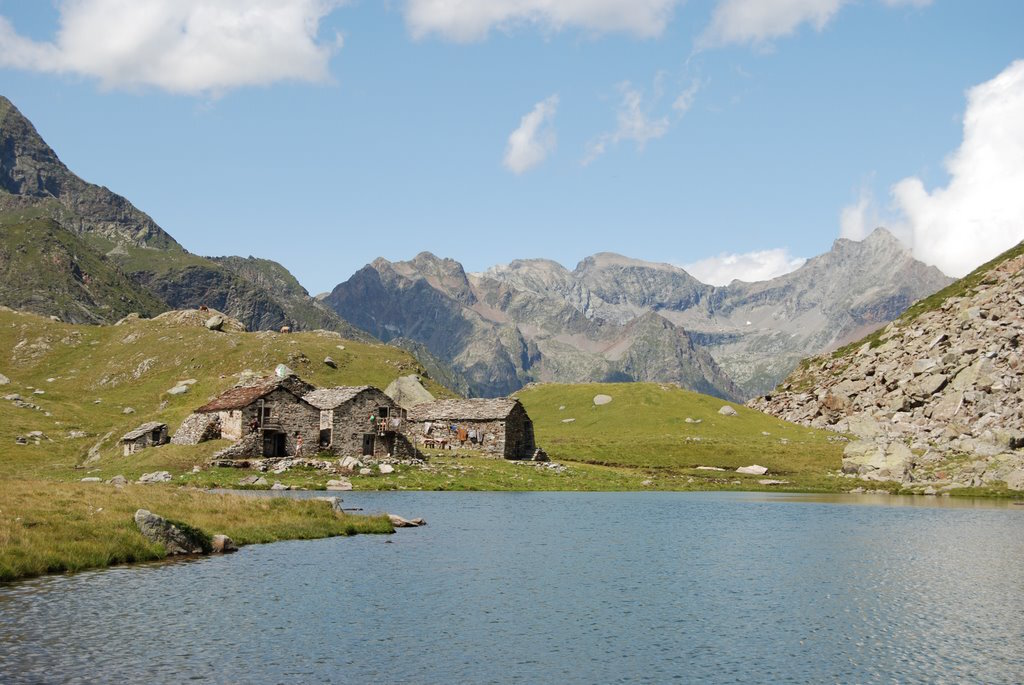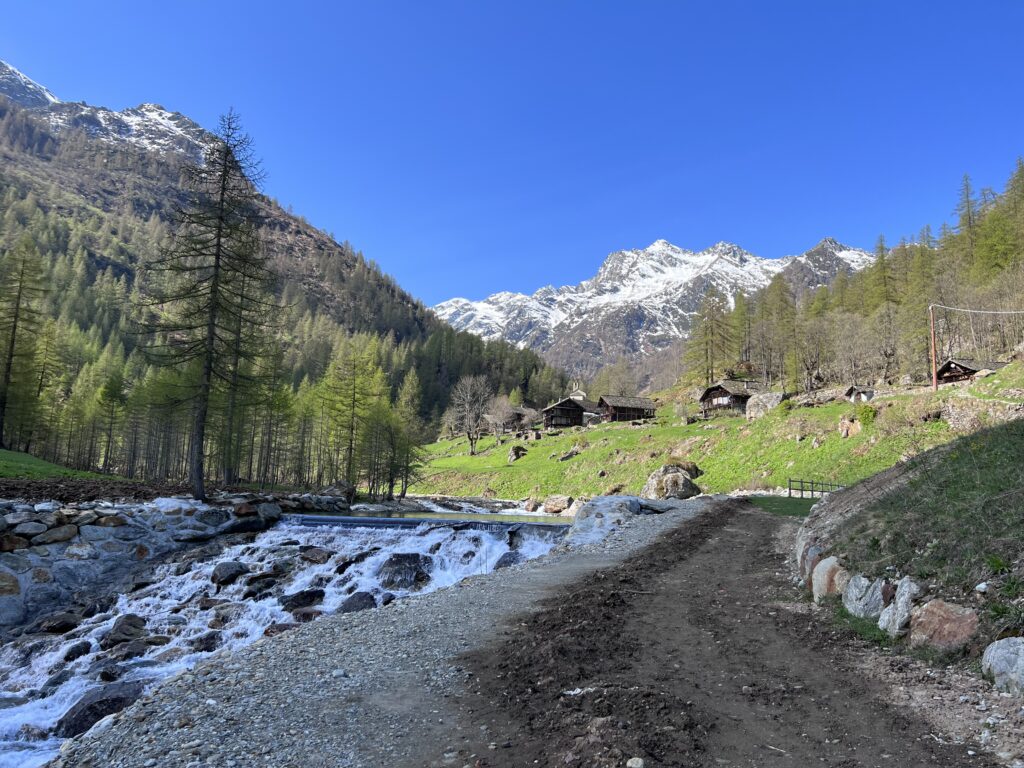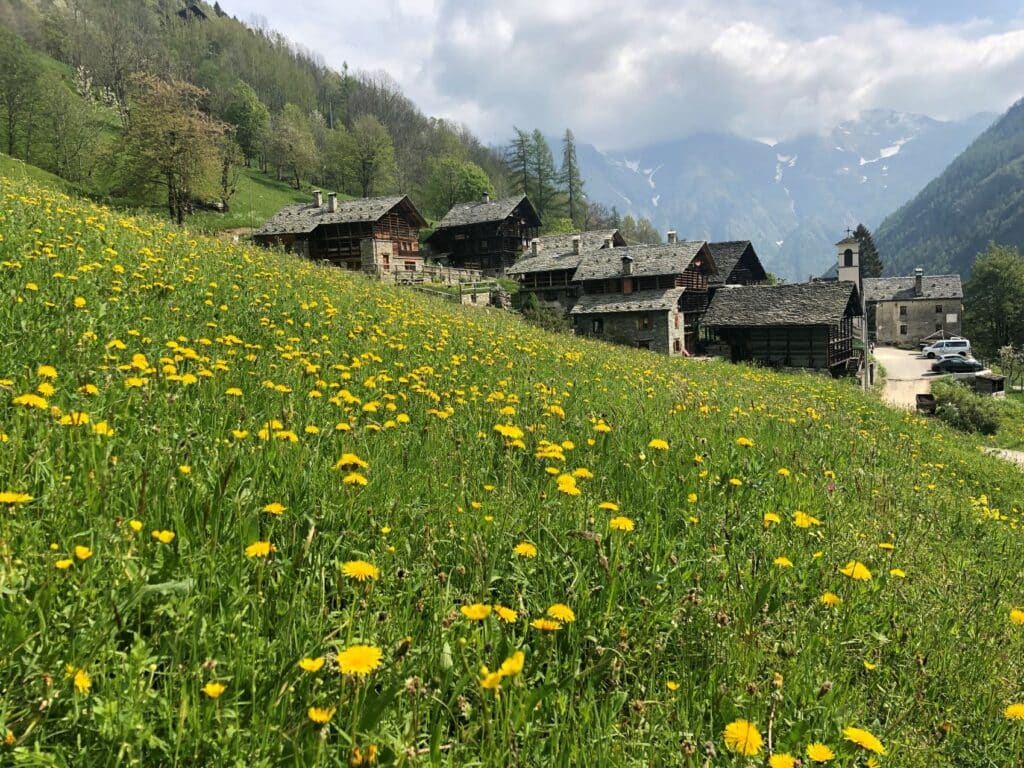
If you have never seen Valle Vogna, come and visit in late spring, when nature takes over every space-time dimension.
Simply put, you will be catapulted into a magical, unique, colourful dimension amidst blossoming Dandelions and cherry, crocus and bell trees.
The Vogna Valley is an ancient land, a land of passage, of migrants and merchants, but also a lived land. The valley was colonised in the early 14th century by Walser Alemanni settlers from Gressoney.
(it seems that Vogna derives from "Wohna" inhabited valley in Germanic).
The itinerary we wish to undertake is part of the Valsesian Art Paths so named because, in addition to the landscape factor, you will enter the world of Art of the ancient chapels, testifying to the faith and artistic side of the locals.
Leaving the car at the Ca d'Janzo car park, we take the path that climbs up towards the hamlet of Selveglio m 1536 (from Silvelius, forest, perhaps already inhabited in pre-Roman times, or from Servej, a Valsesian dialect word for 'brains', erudite people for the times)
The Carestia family, from Selveglio, originated the branch from which Abbot Antonio Carestia, renowned botanist, was born.
The hamlet was once densely populated, with more than a hundred people living here towards the end of the 17th century.
The little chapel of the Madonna del Carmine welcomes us near the large fountain.
We immediately notice the beautiful sundial.
It was a widespread custom to mark the passing of time based on sunlight and the rising or setting of the sun.
Continuing towards Oro, we find another small chapel built as an ex voto by the inhabitants who escaped the plague of 1630. Three more sundials painted in the 19th century are in full view; the curious soul will be amazed to find the signs of the zodiac represented.
But, we told you, astronomers and botanists lived in Selveglio… alas, little understood by the rest of the population, so much so that they were called 'The fools of Selveglio'.
We arrive in Oro; a fire in 1913 destroyed much of the village, a fate similar to many hamlets with wooden houses.
Dominating the hamlet is a characteristic, and almost unique for the area, 'stadel', an ancient granary raised by wooden columns with mushroom-shaped stones to protect against mice.
The oratory of San Lorenzo, built in 1706 by the heads of families to have a place to receive Communion in the highlands, is beautiful.
The path skirts the mountain and between pastures and terraces reaches other wonderful hamlets:
Ca Vescovo, old houses, we can tell by the wood that has challenged and overcome the weather, withstood the weight of many winters and given shelter to generations
Rabernardo, a rather large hamlet, with three fountains, three bread ovens and a small chapel dedicated to the Madonna della Neve. From historical documents, it appears that there was also a workshop where locks and scacciapensieri (Ribebe) were made.
Many houses are now restored; the private house of the Locca family, dating from 1640, has become the Ethnographic Museum
Cambiaveto, a pretty hamlet located on the edge of a gully, recently restored and showing a building with a three-pitch roof, typical of the Vogna Valley.
Piane, a hamlet made up of two groups of houses protected by a stone parapet that bears the date 1560 engraved on it.
All around are pastures and fields that are still in use.
Yes, the hamlet is permanently inhabited throughout the year; there, the rhythm is still marked by the crowing of the cockerel, the slow snowy days and the first warmth of spring.
It is a journey through time that we would all like to take!
The last stop on this wonderful voyage of discovery in the Frazioni alte is the hamlet of Peccia.
Peccia is the dialectal way of calling the spruce tree typical of the area.
One of the first inhabited hamlets in the valley, it has an important past.
Its inhabitants braved the plague of 1630 and the passage of Napoleon's troops in the early 19th century while the houses endured fires and avalanches.
It is said that even one house was moved whole by the force of the avalanche and deposited with its inhabitants inside.
To the south of the hamlet is the small chapel dedicated to San Nicolao, a saint very dear to the Walser population.
To the north, closing the hamlet in a protective embrace is the oratory of San Grato, a very old building.
Returning towards the valley we find a pretty little lake with emerald-green waters, we stop in admiration and enjoy a nice picnic (if you don't want to use the classic blanket, the municipal administration has set up the area with comfortable wooden tables).
And you, are you coming with us?





